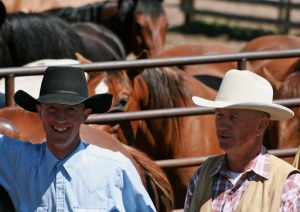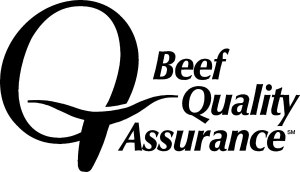Grown in Montana Features State’s Top 10 Agriculture Products
Montana is definitely the beef state and that is confirmed by an article in Montana Department of Agriculture’s recent Grown in Montana publication.
Cattle and Calves make up the largest of agricultural commodities in Montana (based on 2013 cash receipts), with more than 2,550,000 cattle bringing over $1.5 billion to the state’s economy. Beaverhead and Fergus counties lead the state in the number of all calves and beef calves born in the state, respectively.
What about the state’s agricultural commodities? Here is a Top 10 list:
- Cattle and calves – Did you know, there are more than 2.5 cattle for every person living in Montana?
- Wheat – Montana ranks No. 3 in the nation for wheat production. This crop brings $1.4 billion in cash receipts to the state with more than 5,400,000 acres planted.
- Hay – Montana ranks as 4th in the nation for hay production with an economic impact of $753,480,000 in cash receipts. Alfalfa makes up a large portion of this crop valued at an average $141 per ton.
- Barley – In 2013, this cropped reached its highest production value in more than a century and is used for malting or feed. 990,000 acres bring in cash receipts of more than $283 million. Teton county leads the nation in barley production with 7,670,000 bushels. Montana leads the nation in number of barley acres planted.
-
Dry Peas – This pulse crop hit records with 520,000 acres planted in 2014 and $96 million in cash receipts. Montana ranks number 1 in the nation for dry peas and lentils production.
- Sugar Beats – Montana ranks No.6 in the nation for sugar beet production. In 2013, 1,250,000 tons were harvested from 42,800 acres, drawing $92,895,000 in cash receipts.
- Hogs – Montana hogs recently hit prices not seen in more than a decade, with an average value of $145 per head. In 2012, the state had cash receipts of more than $64,109,000 from pig farming.
- Milk – The average milk produced from Montana dairy cows comes out to 21,286 pounds annually, consuming a total of 3 million pounds of feed. The dairy business brings $55,165,000 in cash receipts to the Montana economy.
- Potatoes – Idaho may be most famous as the potato state, but did you know Big Sky Country produces its fair share of seed potatoes? The crop tallies up to $44,389,000 for Montana farmers on 11,000 acres.
- Honey – This sweet treat lands Montana in the No. 2 slot nationally. Montana is home to 160,000 bee colonies, doubling production in 2013 with a value of over $31 million.
Learn more about Montana agriculture and read stories behind the state’s farmers and ranchers in Grown in Montana – “a guide to the state’s top crops, livestock, agribusiness, tourism, food safety and local products – by visiting this link from the Montana Department of Agriculture.



 As fall work starts to wind down, thoughts might turn to preparing for the next year of production and all the supplies that come with it. Vaccines are an important part of a herd health program, and this piece will cover some background and considerations about vaccines and beef cattle production. This overview is not meant to recommend vaccination programs, but will provide definitions of terminology and suggestions for effective vaccination.
As fall work starts to wind down, thoughts might turn to preparing for the next year of production and all the supplies that come with it. Vaccines are an important part of a herd health program, and this piece will cover some background and considerations about vaccines and beef cattle production. This overview is not meant to recommend vaccination programs, but will provide definitions of terminology and suggestions for effective vaccination.












